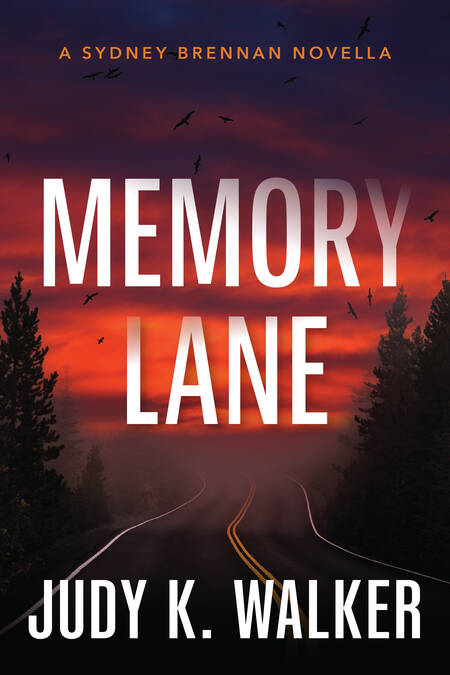Last month, I had an email from an always insightful marketing guy talking about Brussels sprouts. He’d believed he hated the vegetable until a girlfriend convinced him to try them at a restaurant. The verdict: amazing. Now, properly prepared, he considers them a treat.
(By the way, the itty bitty brassicas are actually Brussels—not brussel—sprouts, as they were named for the Belgian capital. You’re welcome.)
I’m okay with Brussels sprouts and just about any other vegetable, but I generally don’t love fruit. (Lychee and dragonfruit are exceptions.) Shocking, I know, but it’s not like I’m a chef or nutritionist. I don’t need to like fruit. I’m a writer.
Which brings us to confessions-that-matter time: I don’t really like short stories or novellas.
Kind of ironic, considering I’ve written several.
At least, I’ve always said I don’t like short fiction. I might even have also used that four-letter verb that starts with “h” and is not hail or herd or husk.
But, do I really h – – – short fiction?
It is true that, as a reader, I don’t consume much short fiction.

Perhaps that’s because I like to dive deep into other worlds. It can take so much work, blocking out this world long enough to submerge, that I don’t like being yanked out at the end of a short story, just when I’m starting to settle in.
And yet, few things have stuck with me more vividly than a short story buried in a fat junior high literature textbook, O. Henry’s The Last Leaf. Unless it’s Fitzgerald’s image of Gatsby’s “green light” of the future, with all of us pushing on, “boats against the current, borne back ceaselessly into the past.”
(The Great Gatsby clocks in at a svelte 47,000-ish words, the same length as my novella No Safe Winterport.)
So actually, as a reader, I have no principled objections to short fiction. I’m just disappointed to see the last page of any story I enjoy, and that moment of disappointment comes more quickly when it’s short.
I began writing short fiction for practical reasons, including the marketing purposes I alluded to in The Cheese, and Secrets In Stockbridge, Stand Alone. But it was also related to my writing process.
I’m mostly a pantser (as in, write by the seat of my pants) rather than an outliner, which means I’m holding a lot of puzzles pieces in my head. By the end of a Syd novel, those pieces are being extruded out my ears like word sausage.
Novellas are obviously much simpler than novels—limited characters, one storyline, and ride it straight through ’til the end. I’ve found that my brain needs a word sausage break, so alternating novels and novellas in the Sydney Brennan series helps keep my gray matter from turning to mush.
But as I’ve gone deeper and deeper into Sydney’s world, I’ve discovered another part of my process that lends itself to short fiction.
Characters are real to me. They live (and die) in my head. That means I don’t always naturally see them in terms of books; I see them in terms of lifespans.
You know that thing that happened in Panacea? Well, a seed was planted in Lazarus. And Syd was more vulnerable to events converging that way because of an incident when she was working at the PD’s office, and because of another episode farther back when she was a teen, and on and on…
My way of seeing characters’ lives isn’t entirely linear, but it does work to some extent looking ahead as well. I know that this accumulation of events will lead to X Event several books from now. (I don’t know exactly how many books, because I don’t know how much happens in between. Yet.)
How does this relate to short fiction?
Lots of—not just interesting, but important—things occur in characters’ lives between the novel high points. Things I want you to know, and things you need to know to fully appreciate what happens later.
[Side note: That’s why I say the Syd books stand alone, but are best read in order. You can absolutely understand everything that happens in any given book without reading the rest. But you can’t fully appreciate it.]
I’m not just talking about main characters, either. There are some—though thankfully not many—secondary characters that continue moving forward in time, living their lives in my head despite having only appeared in a single book. These are characters I know we’re not done with; they have another role to play in Sydney’s big picture. Dunh-dunh-dunh! 😲
Sometimes these story nuggets fit properly within a complementary novel as a subplot. And sometimes. They. Just. Don’t. Like trying to wedge yourself into your pre-Covid jeans.
In that case, a novella or short story is the perfect venue to share the story nuggets that are important, but wouldn’t sustain an entire novel.

My upcoming eighth Sydney Brennan book, Memory Lane, is a novella that story-time-wise follows hard on the heels of Grave Truth.
A doorstopper by mystery genre standards, GT was the longest book I’ve ever written. And yet, there are still nuggets that share threads with that story but couldn’t be wedged into its pages.
Some of these are explored in Memory Lane, but some didn’t fit into Memory Lane, either. See, there’s this short story I’ve been working on. 😉 Until then…
